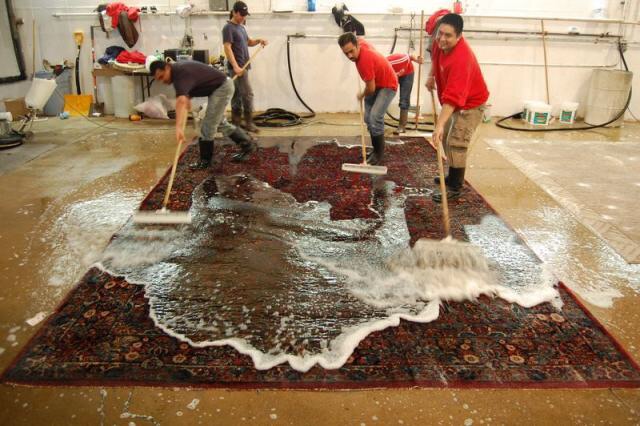How to Clean Your Carpets

Carpet Type: Synthetic
Routine Care: Vacuuming — Remove grit with multiple passes in varying directions. Use the beater brush, set to the pile height. Change bag when one-half full because efficiency decreases after that. Liquid Spills — Clean promptly, using the blot technique described below. If the area discolors, there’s probably a sticky spill residue that has trapped soil. Clean by misting with warm water and blotting.
Deep Cleaning on Your Own: Professional steam cleaning works best on wall-to-wall carpeting and may be required by the warranty. If you want to do it yourself, vacuum thoroughly, then use an extraction machine from a rental company (supermarket models are less powerful). Test cleaning solution by pouring a few drops into a saucer and allowing to evaporate (a hair drier speeds the process). If the dried residue in the saucer remains sticky, switch cleaners. Use fans or air-conditioning to dry carpet. Area rugs can be cleaned using the same methods.
Carpet Type: Wool
Routine Cleaning: Vacuuming — Follow the instructions above, but avoid using a rotary brush on loop-pile (Berber) carpets; the yarn may fuzz. Instead, use a floor tool. Liquid Spills — Clean by misting with water and blotting, as for synthetic carpets. Never use ammonia or any other highly alkaline cleaner, which can damage wool.
Deep-Cleaning On Your Own: For both area rugs and wall-to-wall carpets, home cleaning is not recommended because wool fibers absorb more water than synthetic fibers do. This makes them hard to dry, and area carpets become very heavy and difficult to maneuver. Plus, a lot of the available cleaners are too alkaline. Many of today’s carpets, however — even Oriental-style ones — are actually made from synthetic fibers. To test for wool, snip a strand, and hold a lit match to it; burning wool smells like burned hair.
Carpet Type: Plant
Routine Cleaning: Vacumming — Use the same technique as for synthetic carpets. A beater brush is the best way to remove grit, which causes excessive wear on these carpets. Liquid Spills — Plant fibers are less stain-resistant than synthetics or wool, even if they have been treated with a water repellent, so blot spills promptly, following instructions below. Make sure damp areas dry quickly by using a fan or a hair drier (set on low heat).
Deep Cleaning On Your Own Manufacturers recommend the use of dry methods only. Leave that to a professional.


